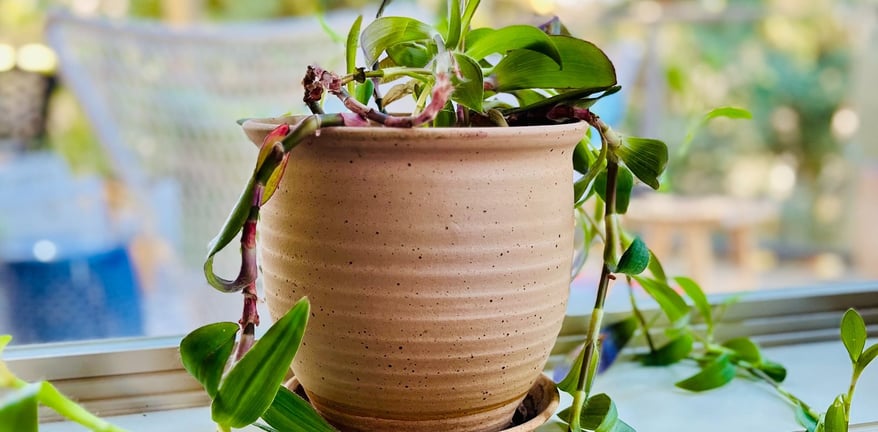Cultivating Calm: Family-Friendly Plants for a Greener, Peaceful Space
NURTURING YOUR SPACE
Monica Rene
2/10/20254 min read


There’s something magical about plants. They bring life to a room, purify the air, and offer a sense of calm and tranquility. Adding greenery to your home is an easy, natural way to uplift your environment and boost your overall well-being. But did you know that plants can also be an excellent way to engage your kids in a fun, hands-on activity that teaches them responsibility and the beauty of nurturing life?
Whether you’re new to houseplants or a seasoned plant parent, involving your little ones in plant care can be a delightful bonding experience. Let’s explore how plants can transform your space and how you can make it a fun, educational adventure for the whole family!
Start Simple: Easiest Plants for Beginners
I’ll be the first to admit, I wouldn’t consider myself a green thumb. In fact, when I first started adding plants to our home, I was a little nervous about keeping them alive! But I soon learned that it doesn’t take a lot of expertise to create a thriving indoor garden. The key is starting with hardier plants that are known to be low-maintenance and forgiving of beginner mistakes.
Some of my absolute favorite plants, and the ones I recommend for anyone starting their plant journey, include:
Snake Plant (Sansevieria) – These plants are practically indestructible. They can thrive in low light, don’t need frequent watering, and are great for beginners.
ZZ Plant (Zamioculcas zamiifolia) – Another low-maintenance plant, the ZZ plant tolerates dry conditions and low light, making it perfect for busy households.
Pothos – Known for its heart-shaped leaves, pothos is incredibly forgiving. It’s perfect for hanging baskets or trailing along a shelf, and it tolerates both low light and missed watering sessions.
Spider Plant (Chlorophytum comosum) – Not only is this plant easy to grow, but it also produces “babies” (small plantlets) that you and your kids can pot and grow into new plants!
Peace Lily (Spathiphyllum) – Peace lilies are beautiful and resilient. They prefer bright, indirect light and can tolerate some neglect when it comes to watering.
Aloe Vera – Aloe is not only low-maintenance but also has medicinal properties. It thrives in bright, indirect light and needs very little water—just a great plant for beginners.
Cast-Iron Plant (Aspidistra elatior) – True to its name, the cast-iron plant is tough. It can handle low light and neglect, and it grows beautifully with minimal care.
English Ivy (Hedera helix) – A versatile, fast-growing vine, English Ivy is great for beginners. It can thrive in indirect light and is very forgiving if you miss a watering.
Get Your Kids Involved: Name the Plants, Water Together, and Have Fun!
One of the best parts of having plants is how they bring the family together. Our kids love being involved in plant care, and we make it a weekly routine. Letting your little ones name the plants and decide where they should go is a simple yet powerful way to engage them. It’s amazing how something as small as letting your child give their plant a name (like "Sunny the Snake Plant") can create a sense of ownership and connection to nature.
I find that once a week is all we need for a watering session—same day every week, and we don’t miss it! By making plant care a regular part of our schedule, it becomes a natural and easy task that fits into our family routine. I’ll go through the plants, checking on their soil moisture, and let the kids help water them. For the thirstier plants, I’ve learned that they’ll let me know when they need a little extra TLC, so I keep an eye out for signs of thirst, like wilting or dry leaves.
Routine Is Key: Stick to a Consistent Schedule
I’ve found that sticking to a consistent watering schedule is the best way to stay on top of plant care. One of the easiest ways to do this is by dedicating one day a week to watering all your plants. This simple step helps me stay organized, and it’s easy to remember—no more worrying about whether or not I’ve watered them recently.
You’ll quickly notice that some plants are thirstier than others. For example, the peace lily loves to be kept on the moist side, while my snake plant prefers to dry out a bit between waterings. The beauty of having plants is that once you find a routine, it becomes a joyful habit—something you can all look forward to!
How Plants Transform Your Home (and Your Well-Being)
When plants become a regular part of your home, it’s more than just aesthetics. They actively contribute to your well-being. Plants purify the air, improve humidity, and even have a calming, mood-boosting effect. The act of caring for them—whether it’s watering, pruning, or simply observing their growth—can be incredibly therapeutic for both you and your children.
When your kids help take care of plants, they not only learn about responsibility and empathy, but they also get to experience the joys of watching something grow, thanks to their care. It’s a wonderful way to bond with your little ones while teaching them valuable life skills.
Conclusion: Let Nature Flourish in Your Home
Adding plants to your space can truly transform the atmosphere in your home. It’s not just about the physical beauty they bring to your space, but also the calming, restorative energy that plants exude. And when you involve your little ones in the process, it becomes a shared activity that fosters a deeper connection to nature and each other.
So, start simple with easy-to-care-for plants, establish a watering routine, and have fun with it! Before you know it, your home will be brimming with life—and so will your family’s hearts.
